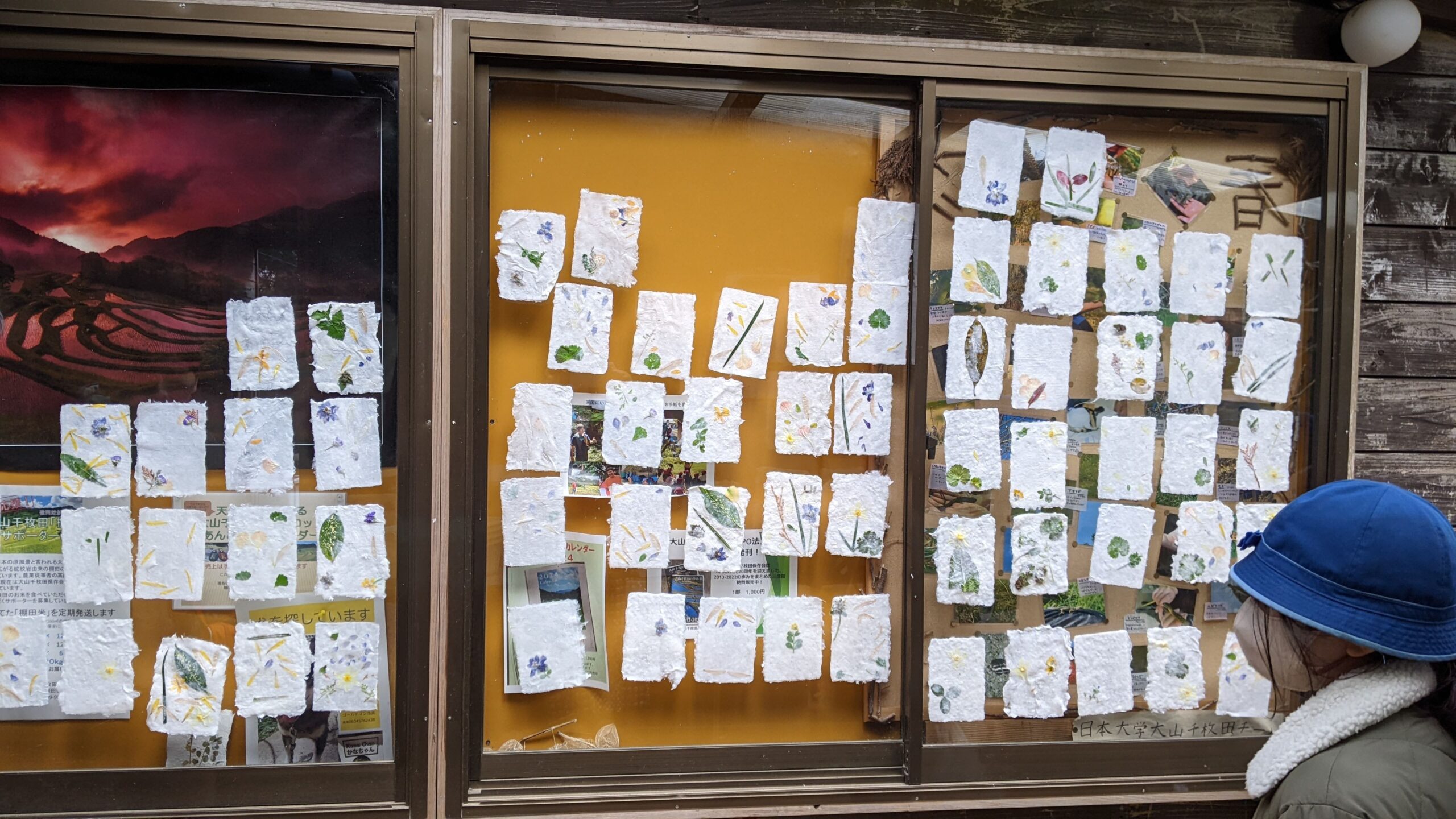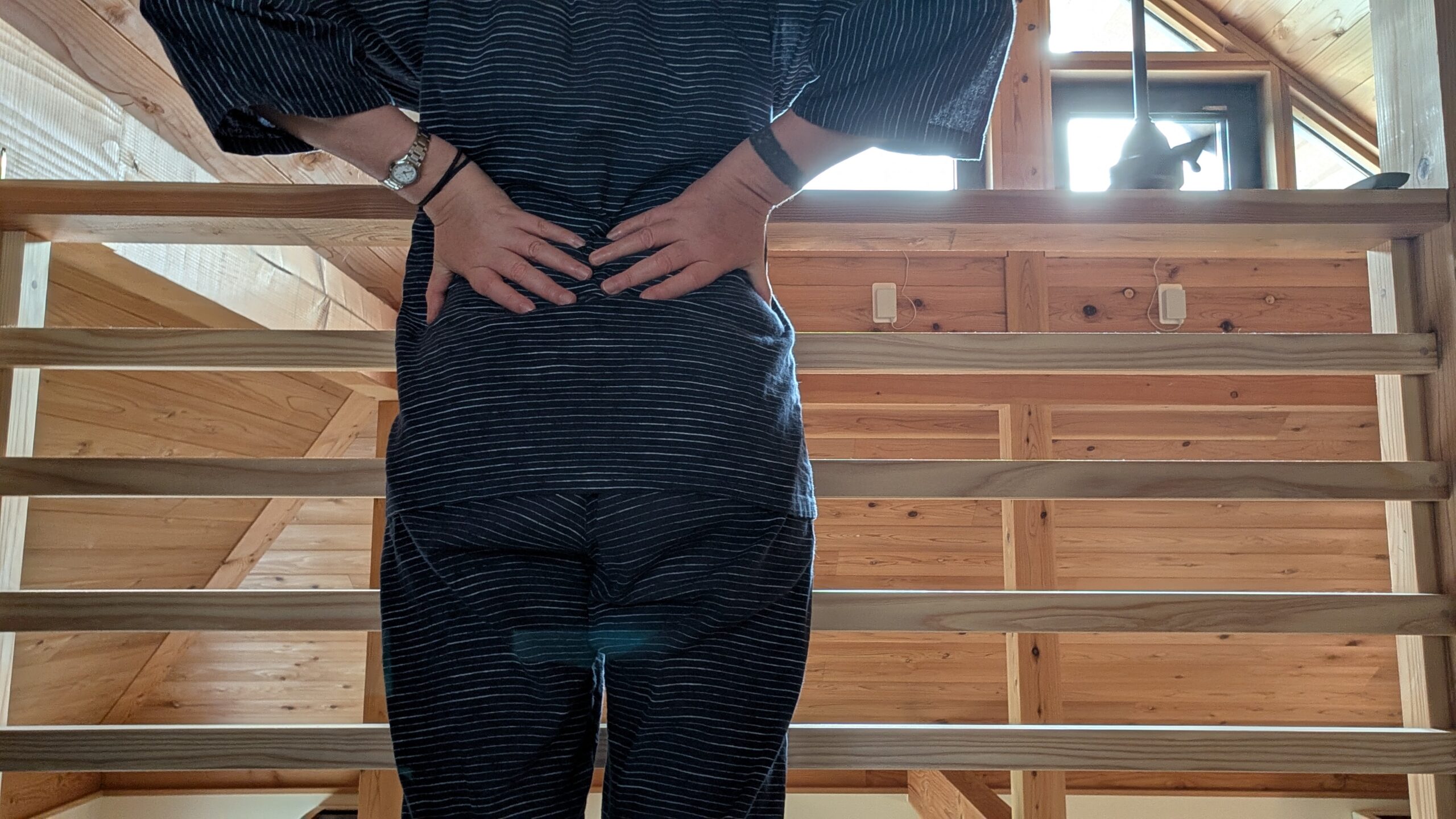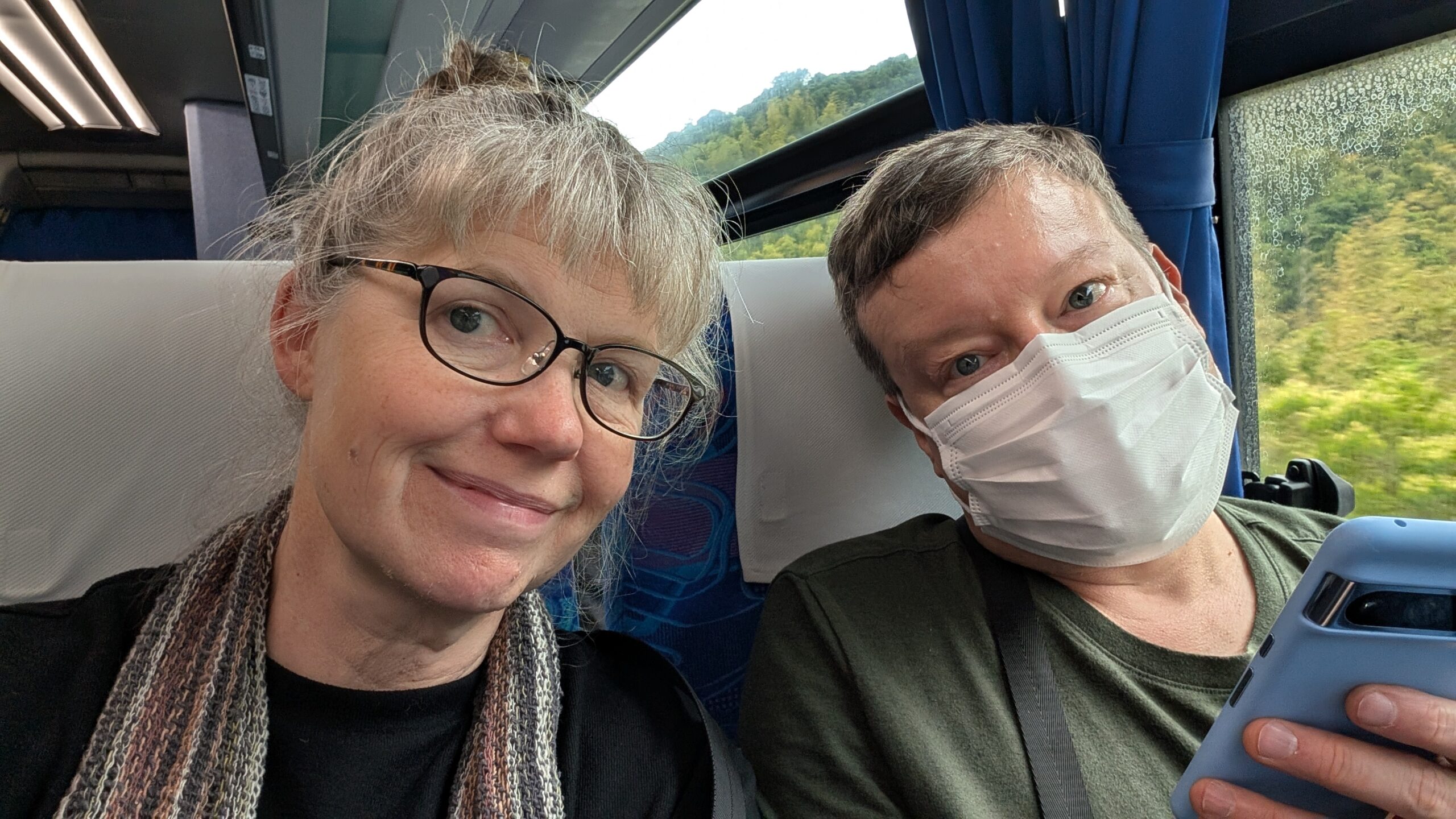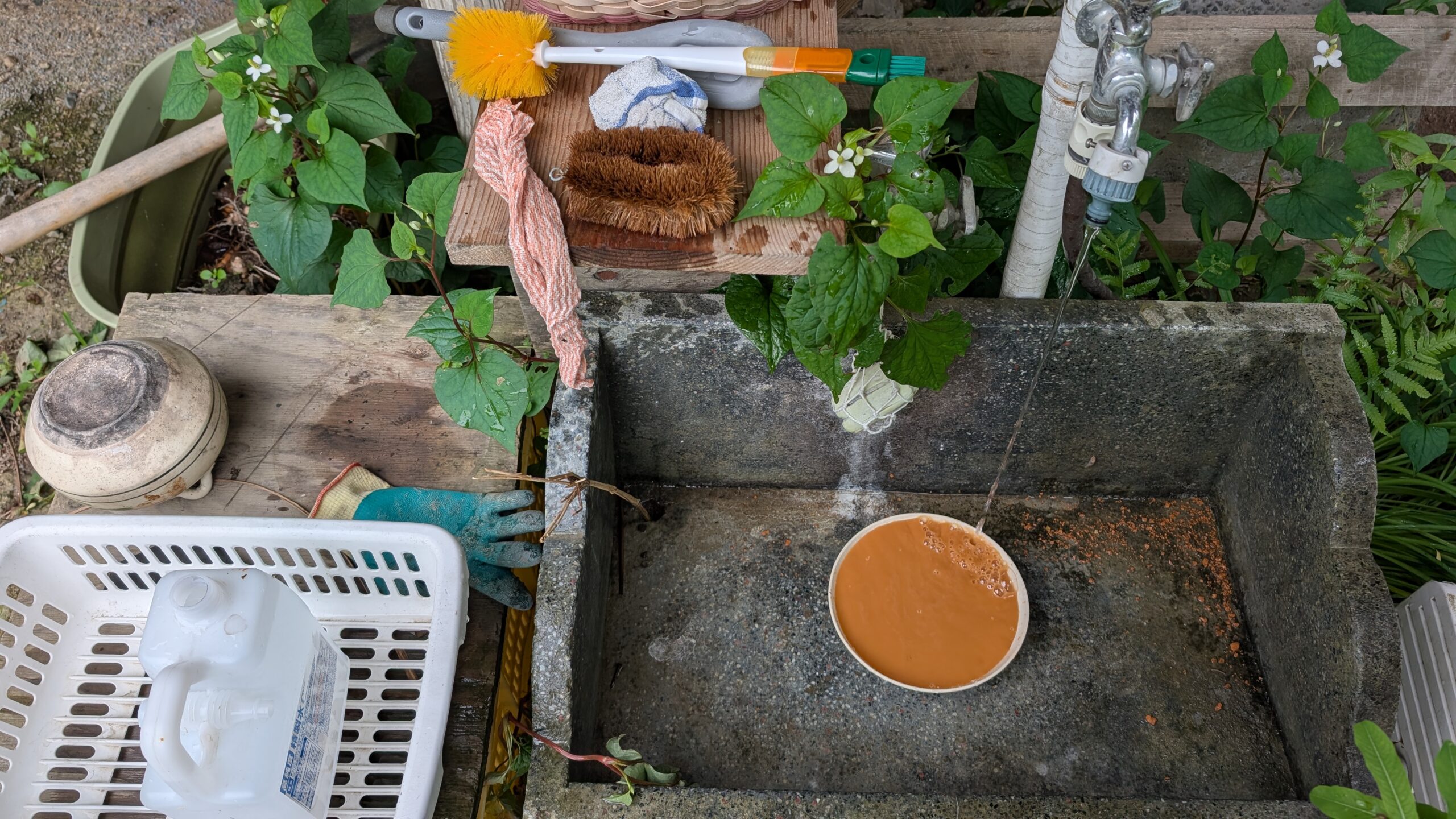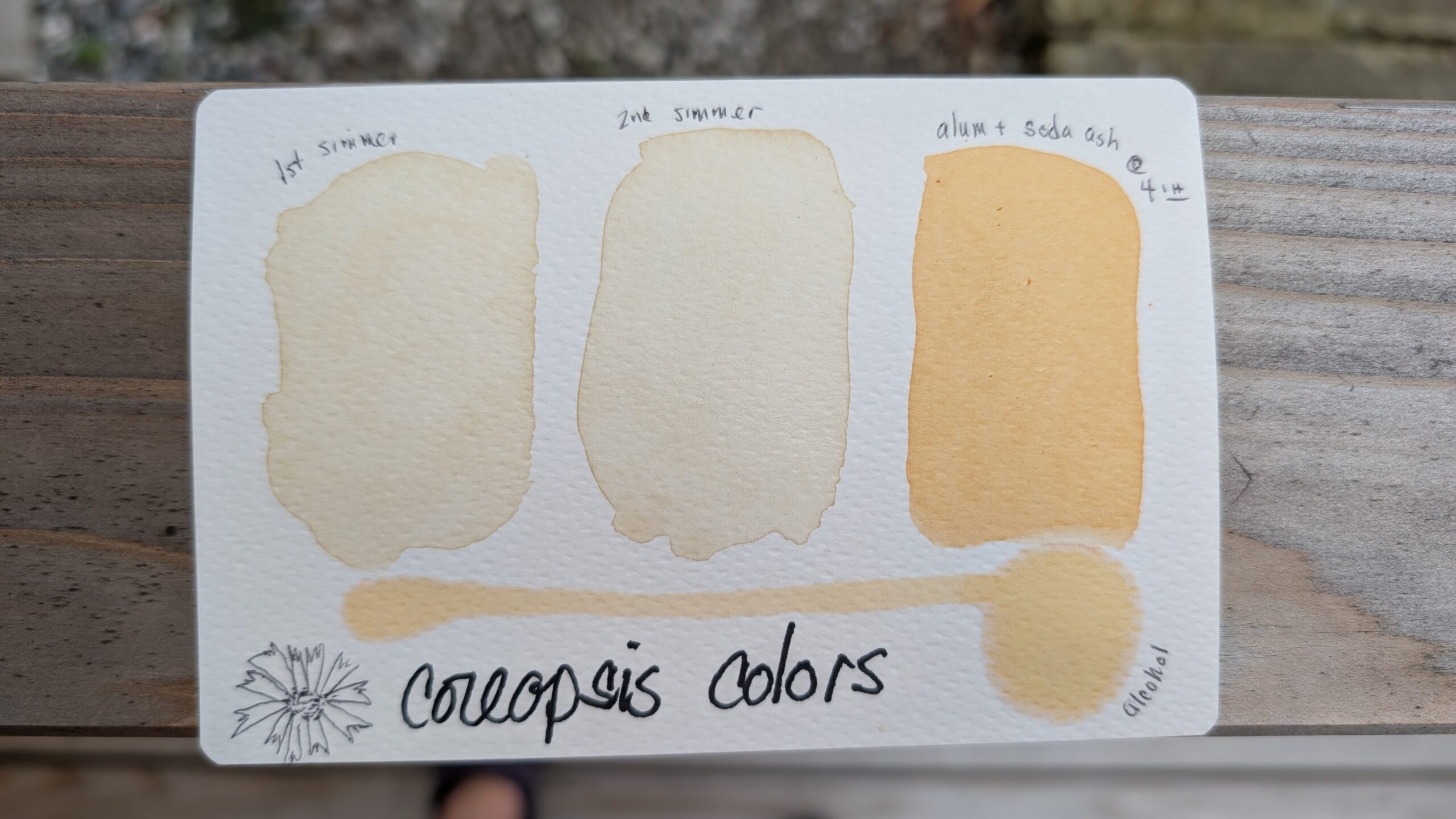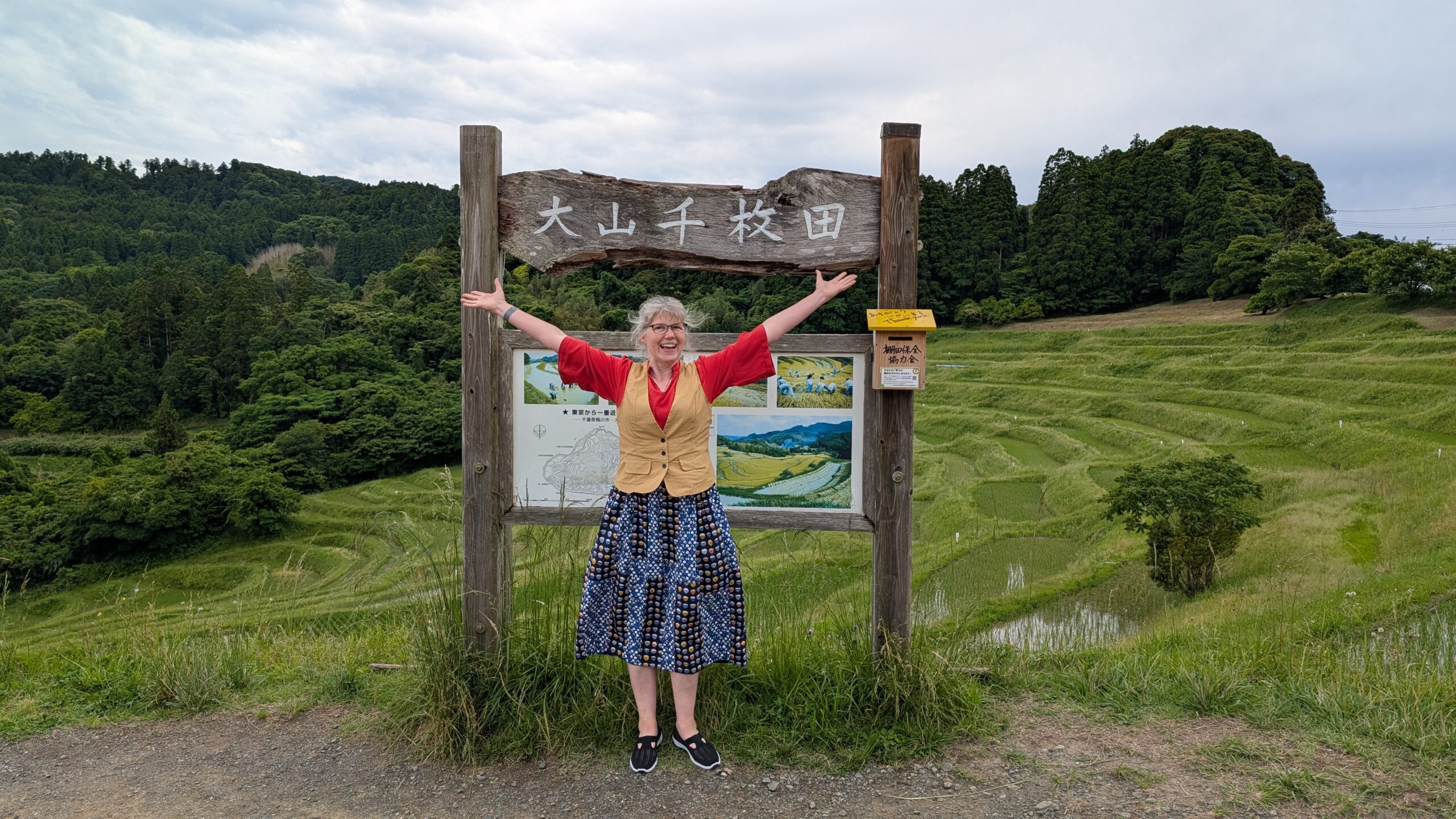I am working my way through the hands-on workshops at Oyama Senmaida in order to create English handouts for students who may need them. In January, learned how to weave a turtle from straw. Today I assisted with the paper making experience. The paper is made with a pulp of old milk cartons, using a postcard-sized wooden deckle with a bamboo mat as the screen. The kids decorate their cards with flowers and grasses that they pick in the rice field.

I have made paper plenty of times but it has been years since the last time, so today was a good refresher, as well as a chance to learn some new techniques.
For example, in the interest of time, tidiness, and success, each papermaker used an absorbent “pet sheet” under their workspace. Although a bit wasteful, as each kid made three cards and so used three sheets, it really does keep the process moving and helps to ensure that most of the cards are dry enough to come out of the deckle.

After pressing out as much water as possible using pet sheet and a paper towel on both sides, then removing the paper from the deckle, it goes onto the ironing table to steam out more of the water. And then the new paper is peeled away from its paper toweling. This isn’t always easy to do for beginners – or experienced papermakers, for that matter, so I gave tips and helped when paper got stuck or flowers peeled away. (That was usually because the paper was still too wet. Another ironing usually helped. )
Finally, the damp postcard is stuck to glass so it can dry flat. My mother would have approved this step as it is how she used to dry her starched nurse’s caps in school. (She shared her story about this Obsolete Skill on NPR in 2008)
I was working with Kawasaki-san and Sugimoto-san. We arrived 90 minutes before the program started to set up our space. After laying out all the supplies, we did a test card and decided to reblend the pulp, as it was a bit too lumpy.

And then the kids arrived, we did the usual introduction with everyone, and the fun chaos began.
At the end of class, the kids tidy up the workspace – from washing the deckles to sweeping the floor. This is a smart move as it leaves us with much less to manage afterwards. With the materials collected and clean, we drained the pulp and packed all the supplies to go back into storage.
During our post-event meeting, Ushimura-san mentioned how the kids liked seeing me in the lineup as they arrived and left. My appearance in the welcoming lineup is strategic. I make sure to put myself where I can greet the students as they arrive, so that they get the “oh, a foreigner” moment out of their system before the workshops start.
But that’s not obvious to anyone but me. What she said was “Kristen is very bright and lively.” That’s thanks to circus, where I learned to use my face and body to communicate effectively. “Welcome to this fun thing you’re about to do; we’re so glad to have you here; I see you as a person” is transmitted with every “ohayou gozaimasu.”
